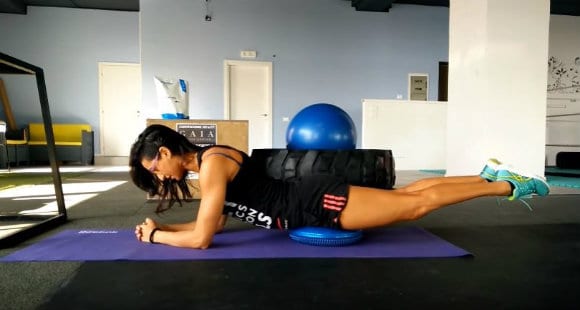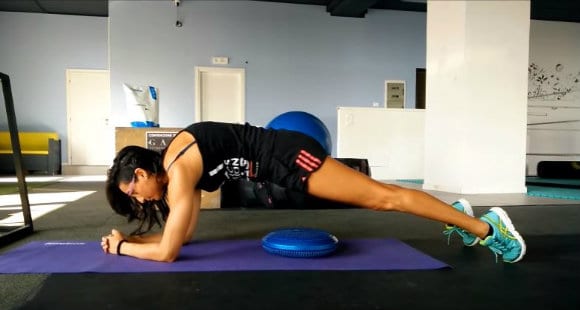By healthiergang writer , personal trainer and calisthenics athlete (www.).
Arch Body e Hollow Body
Before even talking about calisthenics skills including arch body and hollow body (Planche, 360 on the bar, Front Lever, Human Flag, Back Lever, Muscle Up, etc.), I would like to stop and talk about CORE.
What is CORE?
From the English "heart" or "center", in anatomy it is what we can identify as "abdominal corset" which, beyond its strong aesthetic note when we find ourselves exhibiting "the sculpted turtle", is essentially a complex of muscles that act as a bridge between the lower and upper limbs giving us strength, stability, coordination and "protection" in the lumbar region from injuries.
It is essential to have extreme awareness of the dynamics of the pelvis and of the position we are going to assume from time to time during the execution of exercises, whether they are fitness, weights or calisthenics.
First of all, let's clarify something that unfortunately I still see very confused in today's gyms. The muscles that flex the femur over the pelvis are NOT ABDOMINAL.
In particular, the Iliac muscle, the Small and the Great Psoas (Ileo-psoas), are often mistakenly mistaken for "low" abdominals (which do not exist in anatomy).
The best way to involve them will be to train them in synergy with the core, but always with a view to complete athletic gestures and not isolation.
It will certainly not be a hypertonic, hypercontracted and perhaps even retracted iliopsoas to make you maintain the line of force to the perfection of your "Dragon Flag" or your "Front Lever", or to make you pass back pain! On the contrary!
Real abdominal muscles along with other deep muscles that work in synergy create this Bruce Lee-worthy, punch-proof protective corset! These muscles if properly trained and activated will make you strong, performing, without back pain and absolutely aesthetic!
Trying to simplify things: imagine the Core as a multi-layered muscle cylinder.
The base is made up of all the muscles of the pelvic diaphragm (pelvic floor), while the roof is identified with the diaphragm muscle necessary for breathing. These deep muscles have a delimiting and structural function.
At the rear, at a deep level, there are Multiphids, Erectors of the column and Quadrato dei Loombi with the task of extending the vertebral column in synergy with the muscular complex of the buttocks, bringing the pelvis forward (anterior / anti-version of the pelvis), determining the "Arch Body "(arched body).

Inside the arch body we find muscles with different functions. The Transversus has an expiratory function, which is structural rather than motor. The Internal and External Oblique muscles have the task of tilting the spine laterally.
The scientific name of the “Abdominal Tortoise” is Rectus Abdominis; besides being an expiratory muscle it determines the motor function of flexion of the spine in its thoracic and lumbar tract.
It is a hypokinetic muscle with a motor range that goes from 0 ° to a maximum of 18 ° -20 °.
It seems clear that the retroversion position of the pelvis, with the approach of the pubic bone to the xiphoid process, determining the "Hollow Body" (empty or hollow body), is implemented thanks to the total contraction of this muscle. the hollow body is therefore the opposite version of the arch body.

Let's finally look at the practical side of the matter.
How are the arch body and hollow body done?
In my tutorial I propose to start the calisthenics training path from the basics of what is the perception of the CORE.
I propose to chain movements that involve both the muscles that flex and those that extend the spine in a dynamic and composed way, becoming more and more aware of the arch body and hollow body positions.
Dynamic positions performed with a variable number of sets (3 - 4) and repetitions (6 to 15).
The dynamics can evolve into static, pure isometric with seals lasting several seconds (from 30 '' to 1 ').
To complete the work on the abdominal muscles, also involving the Obliques, I selected some exercises that are slightly more demanding and less monotonous than the classic gym “side bend” resting on the elbow.
Here they are presented in the video:
Conclusion
We have seen in this article the importance of the arch body and the hollow body, fundamental exercises that are part of calisthenics, a physical activity that has become extremely popular in recent years.
With this mini guide you can be sure not to go wrong in the execution of the arch body and the hollow body.
Our articles should be used for informational and educational purposes only and are not intended to be taken as medical advice. If you are concerned, consult a health professional before taking dietary supplements or making major changes to your diet.


























